#rosenthal galerie
Text

Kounellis, Texts by Johannes Cladders, Bruce W. Ferguson, and Mark Rosenthal, Galerie Karsten Greve, Köln, 2007
#graphic design#typography#art#visual writing#catalogue#catalog#cover#jannis kounellis#johannes cladders#bruce w. ferguson#mark rosenthal#galerie karsten greve#2000s
31 notes
·
View notes
Photo
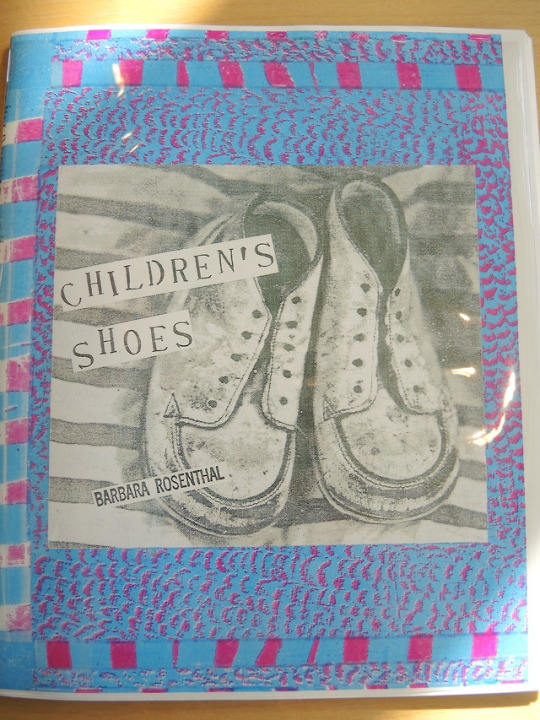
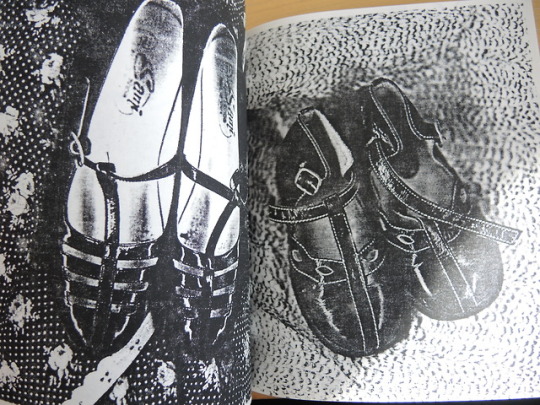

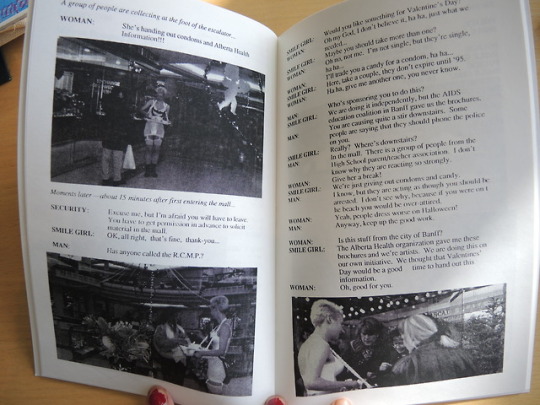




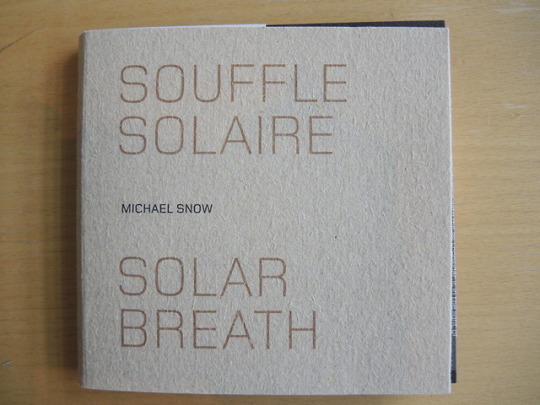

Artists’ Book collection for the week of September 24th, 2018
Children's shoes by Barbara Rosenthal- New York : B. Rosnthal, 1993
Points of interest : points of view by Kathryn Walter- Banff Ab : Art Studio, The Banff centre, 1994
Nachdencklichlachdenknich by Ranier Haarmann- Berlin : Ranier Verlag, 1981
The Book Unbound by Mary Ellen Long, Co-curator- Ormond Beach, FL :Ormond Memorial Art Museum, 1994
Souffle solaire = Solar breath by Michael Snow ; [direction de la publication, Louise Déry]- Montreal, Quebec : Galerie de l'UQAM, 2005
#Artist Book Collection#Art Book Collection#Artists' book#Art Books#Art#Books#Artist Books#Book#artist's on tumblr#Artist Book Display#Book Display#Art Display#Style#children's clothing#Barbara Rosenthal#Banff#Cascade#Mall#Kathryn Walter#German#laughable#Ranier Haarmann#Photography#Box#Ribbon#Mary Ellen Long#black and white art#unique binding#film#Michael snow
2 notes
·
View notes
Text
Face aux dark stores, jusqu'où pousser l'expérience en
Dans une société qui se darkstorise , il n a jamais été aussi important de magnifier le commerce , avançait Jean-Paul Mochet, président des enseignes Monoprix et Franprix, lors de la présentation du nouveau concept Monop début juillet . Situé sur m rue de Marseille dans le e arrondissement de Paris, il doit être déployé dans vr a vendre un quart des Monop cette année. Face aux acteurs du quick commerce, qui promettent la livraison en moins de minutes en s appuyant sur des dark stores, Monoprix veut défendre sa vision du commerce : Nous avons voulu parler de bright commerce , pour le double sens à la fois intelligent et lumineux. Nous ne faisons pas de rétrocommerce, opposé à la technologie , indique Maguelone Paré, directrice concept & innovation chez Monoprix.
Elle prône une consommation mixte : Nous devons nous positionner entre dépannage rapide, plaisir shopping et praticité de l e-commerce, en faisant évoluer notre offre et l expérience en magasin. Au-delà de proposer de l alimentation, de la mode ou de la décoration, Monoprix renforce l importance de ses marques propres, qui p��sent % des références vendues dans le nouveau concept Monop , lequel se distingue aussi par Je m appelle reviens , une offre de prêts gratuits d objets pendant h, qui concerne autant la glacière que le vélo-cargo. L enseigne renforce son offre de fruits et légumes, de produits locaux, de saison, à la coupe, en vrac - via des partenariats avec Les Vaches, Gallia ou Carambar - et enfin ceux confectionnés sur places, des frites aux barbes à papa ! Et la technologie là-dedans ? Sur m, il est possible d acheter plus de références en sans même passer en caisse. Par ailleurs, il est possible d accéder aux offres de livraison Monoprix Plus et Monop Eat, et les clients peuvent apprécier les contenus vidéo diffusés sur les portes de la réserve, montrant l entrepôt Monoprix à Fleury-Mérogis. C est une façon de dire que notre réserve ne se limite pas aux quelques mètres carrés qui se cachent derrière la porte ! Elle est riche des références que l on peut se faire livrer , indique Maguelone Paré. Comme l indiquait Jean-Paul Mochet : Ce concept a été pensé pour réunir le meilleur des deux mondes. Oui, mais...
Est-ce suffisant face à la promesse d être livré, sans bouger de chez soi, en une quinzaine de minutes par un Gorillas, Getir, Flink, Cajoo ou Dija, sans oublier KOL et Frichti, ou même les offres en une heure de La Belle Vie ou Mon-Marché.fr ? Ces services misent, comme Uber à ses débuts, sur la qualité du contact avec un livreur parfois salarié, mais aussi sur la multiplication des promotions et des attentions. Rapidement, ils ont renforcé leurs offres de fruits et légumes et de produits artisanaux locaux, pour rompre avec l image d un service de dépannage. Le tout en revendiquant des prix équivalents à ceux des commerces de proximité, voire de la grande distribution. On peut se poser la question de leur rentabilité ou estimer que leur poids est encore infime, sur un segment de la livraison à domicile qui ne pèse que % du marché de l e-commerce alimentaire, selon Nielsen. Mais depuis le premier semestre , ce canal connaît une croissance de %, contre % pour le drive... Le temps passé en ligne à faire du shopping a augmenté de % en . Il faut y être pour vendre et proposer des expériences qui sont aussi différenciantes , indique ainsi l expert du retail Frank Rosenthal. Si au moins % des ventes sont toujours réalisées en physique, il rappelle que les acteurs du quick commerce sont en train de redéfinir le sens du commerce de proximité dans les grandes métropoles. Il ne faut pas rejeter trop vite l impact de la promesse d une livraison en minutes. Souvenez-vous qu il y a trois ans, certains disaient que la livraison en une heure n intéressait personne ! Partant de ce constat, un retailer peut tenter de rivaliser sur le terrain de la commodité... Ou défendre ses prix et proposer des expériences encore plus poussées. C est ce qu indique Vincent Grégoire, directeur des études pour vr a vendre le cabinet de tendances NellyRodi, qui, en la matière, voit se développer deux modèles : le monostore expert store pour explorer en profondeur une gamme de produits, une matière ou une couleur, et le bazar store bordel store où vont se multiplier les expériences.
Le premier modèle est susceptible d accueillir un sas apprenant , au travers duquel le client acquiert un savoir ou un savoir-faire. On éclaire ses choix de consommation, tout en se distinguant du digital grâce à une approche sensorielle : une table de toucher, des diffuseurs de parfums... À l inverse, un bazar a une approche plus foutoir ! On va copier les caractéristiques d une marketplace en ligne, en proposant de tout, à tous les prix, y compris en matière d expérience : atelier où l on répare ou customize des produits, tiers lieu qui accueille un bar ou un café, espace de conférence ou d exposition, ou encore un endroit dédié à des offres spéciales, du co-branding ou du shop-in-shop. On y va quand on a besoin de rien, c est un peu le parc d attractions. Attention, néanmoins, à ne pas se heurter à la simple réalité des chiffres. Certains produits se prêtent à des espaces de démonstration, où l on apporte un conseil personnalisé au client. Mais quand on connaît le prix de l immobilier en ville, il faut être certain d y faire des ventes. Adopter une approche expérientielle sur un flagship, où l on va surtout chercher à travailler la considération ou le NPS, et faire du earned media, pourquoi pas ? Mais le généraliser... , alerte Frank Rosenthal, rejoint par Pascal Malotti, directeur conseil chez Valtech France, qui, s il estime qu il y aura une polarisation de plus en plus franche entre les services de livraison et le magasin physique, avec deux propositions de valeur très éloignées , reconnaît que pour l instant, de nombreuses enseignes sont au milieu du gué. Elles sont loin d avoir les ressources d un Amazon ou d un Alibaba pour proposer des expériences aussi disruptives qu Amazon Go ou Hema Fresh . Mais pour industrialiser l expérience que l on retrouve au sein d un Monoprix Montparnasse ou d un Franprix Opéra, la marque doit disposer d un écosystème capable d absorber le coût de ces investissements . Des ours polaires au milieu des Galeries Lafayette, une boutique Pandora transformée en un champ de fleurs ou un store virtuel, pour Bulgari, qui s ouvre sur des scènes d Italie. En plus d animer le magasin ou d étendre virtuellement sa surface, les expériences ARVR du studio Sky Boy peuvent être déployées à grande échelle, y compris en ligne, et devenir des sources intéressantes de data pour les enseignes. Mais aussi de ventes, avec un taux de conversion de % sur certains dispositifs. Ainsi, selon Snapchat, les nouvelles générations recherchent des expériences omnicanales, comme le fait de pouvoir essayer des produits grâce à la réalité augmentée. Toutefois, la moitié recherche également les interactions humaines propres au magasin...
Le digital rend le produit accessible partout et tout le temps. Mais le magasin se distingue par l expérience : quand j achète en ligne, j ai souvent un produit, pas toujours à la bonne taille, dans un packaging peu soigné. C est une mauvaise expérience de marque, ce qui est catastrophique compte tenu de l argent dépensé pour recruter le client , analyse Jérémy Dahan, président de Globe Groupe, qui fait a promotion du live shopping : Accessible quand le magasin est fermé, il permet un niveau d expérience et de conseil proche de ce dernier grâce à l échange avec le vendeur. C est l image de marque et l expérience qui permet de justifier le prix ! Or, au-delà du conseil, le live permet aussi d accéder en temps réel à la data, à la différence du point de vente où l on identifie le client vr a vendre et on accède à son historique d achat qu une fois que celui-ci passe en caisse. Globe propose ainsi via sa trentaine de studios des lives one-to-many événementiels, autour d un produit ou d un invité star, avec lequel les internautes veulent échanger. Mais l agence développe aussi le live one-to-one en fil rouge, en proposant de mettre en relation un internaute avec un vendeur en magasin. Soit, peut-être, un premier pas vers une expérience omnicanale qui permet à certaines enseignes de se distinguer, à l image de Leroy Merlin, Enseigne Préférée des Français en selon EY-Parthénon et Marketing Magazine. Il faut pouvoir répondre à tous les besoins. Un tutoriel en ligne ou une session de coaching particulier, c est plus pratique qu un cours quand on est en train d accomplir une tâche et qu on a besoin d aide à l instant T. Les vues sur nos tutoriels ont augmenté de % l an passé, pour atteindre les millions, tandis que personnes participaient à nos cours collectifs en ligne, qui ont rencontré un bel engouement avec un score de satisfaction de ,. Mais pour vraiment apprendre, c est mieux de pratiquer et d avoir le matériel à disposition. C est une raison essentielle qui pousse les gens à venir en magasin... Au-delà de rencontrer pour de vrai les vendeurs qu ils voient sur nos lives ! , explique Charline Nuttin, responsable des services DIY Do It Yourself. En magasin, les clients peuvent aussi bénéficier de l offre de services Parlons Maison : la possibilité d échanger et de concevoir ses projets avec des architectes ou des paysagistes membres du réseau de partenaires locaux de l enseigne. Le produit est toujours au coeur de notre offre, mais il est désormais systématiquement accompagné par du conseil ou du service, et cela vaut autant pour les travaux que pour le bricolage. Le DIY, cela passe aussi par un simple atelier de restauration d un meuble à destination d un public de débutants. C est ce qui nous permet de créer de la préférence de marque et de faire la différence avec les pure players lors de l achat ou de la location du matériel nécessaire à des travaux plus poussés à l avenir !
De son côté, au-delà de l offre et des services revisités, Monoprix veut développer cette expérience omnicanale en dotant chaque nouveau Monop d un compte dédié, afin de garder un lien avec les clients locaux, tout en mettant en avant les https://www.youtube.com/watch?v=dbsvKGppIV4 initiatives in-store, par exemple la promotion de projets et d associations du coin, via un partenariat avec la plateforme de crowdfunding Ulule. De quoi déployer à grande échelle les expérimentations menées sur La Place Publique du Monoprix Montparnasse ? L avenir nous le dira.
0 notes
Photo

► SAVE the Date & bring some friends!
Sa, 26. Januar 2019 - *Charlottenburger Hängung* | Vernissage 18 - 21 Uhr
© Heike Mardo, Lamp II, 2015, 30 x 40 cm, Ed. 5.
Mit dabei sind:
Bernhard Ailinger, Christine Balbach, Roland Behrmann, Gilbert Brohl, Simon Czapla, Oliver Dehn, Oliver Estavillo, Fabian Freese, Thomas Gatzemeier, Christina Gay, Eva Maria Horstick, Thomas Jüptner, Horst Kistner, Jens Kloppmann, Andreas Koch, Jutta Kritsch, David D. Lauer, Heike Mardo, Kerstin Müller, Lucas Oertel, Ulrike Pisch, Pola Polanski, Stephan Paul Schneider, Stephan Seitz, Nanako Shikata, Marcia Raquel Székely, Pina Rath, Simon Rosenthal, Gerard Waskievitz.
Michaela Helfrich Galerie, Bleibtreustraße 3, 10623 Berlin
www.michaelahelfrich-galerie.com
0 notes
Photo





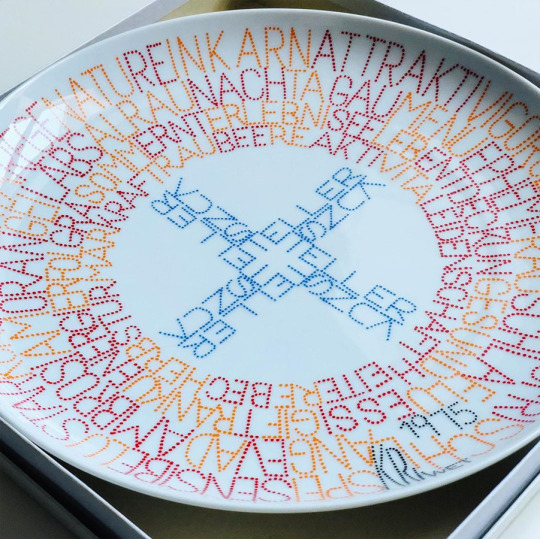
Rosenthal Künstler-Teller Nr. 8: Kriwet, «Text-Teller», Rosenthal Galerie, 1975
(via Hugh Miller)
51 notes
·
View notes
Text
'A deeper source of truth than appearances': Antony Gormley on Joseph Beuys
New Post has been published on http://getyourgossip.xyz/a-deeper-source-of-truth-than-appearances-antony-gormley-on-joseph-beuys/
'A deeper source of truth than appearances': Antony Gormley on Joseph Beuys
“Here is somebody who saw a world disintegrate because of ideology and wanted to find a deeper source of truth than appearances,” says the artist Antony Gormley of Joseph Beuys. A self-confessed fan of the German post-war artist, Gormley will take part in a panel discussion at London’s Galerie Thaddaeus Ropac on 6 June as part of the gallery’s show Joseph Beuys: Utopia at the Stag Monuments (until 16 June). Gormley will be joined by the exhibition’s curator Norman Rosenthal and The Art Newspaper’s contemporary art correspondent Louisa Buck.
Looking at the impact of Beuys’s ideas, during his lifetime and today, Rosenthal will also talk about his personal memories from his time co-curating the artist’s exhibition Zeitgeist (1982) at the Martin-Gropius Bau in Berlin. The current show includes Beuys’s major sculptures and rarely seen early works—notably his seminal Stag Monuments, which is reunited in almost its entirety for the first time since its creation.
Book a place for the free talk here. The Art Newspaper will also live-stream the talk on the website and Facebook page.
0 notes
Text
Konstantin Grcic
Konstantin Grcic. Diseñador industrial.
Konstantin Grcic (1965, Munich) es diseñador de mobiliario alemán.
De niño le gustaba construir objetos y después de la escuela secundaria, comenzó a trabajar para un restaurador de muebles antiguos “porque quería aprender cómo se hacen las cosas de manera correcta“, recuerda.
Esto derivó en estudios de ebanistería en la Escuela John Makepeace (Dorset, Inglaterra), donde descubrió algo que le gustaba incluso más que la construcción : el diseño.
Después ingresó en el Royal College of Art de Londres, donde encontró su verdadera pasión: el diseño de muebles.
Desde la creación de su propia Oficina Konstantin Grcic Diseño Industrial (KGID) en Munich en 1991, ha desarrollado y se ha especializado en varios campos que van desde el mobiliario y otros productos industriales, iluminación para algunas de las empresas líderes en el campo del diseño, hasta el diseño de exposiciones y trabajos relacionados con la arquitectura.
En este tiempo, desde que salió de la Royal College of Art hasta hoy, Konstantin Grcic ha cosechado incluso el reconocimiento de maestros como Achille Castiglioni, el diseñador italiano fallecido en 2002, que veía en él a su heredero espiritual y admiraba tanto su meticulosa investigación de la historia del diseño y la arquitectura, como su pasión por la tecnología y los materiales.
Su trabajo es conocido por todo el proceso de pensamiento lógico que Grcic desarrolla poniendo especialmente el interés en la integridad de los materiales y el respeto por los métodos de producción.
Konstantin Grcic combina el rigor y la severidad formal con una considerable agudeza intelectual y cierto sentido del humor. Grcic es a menudo definido como minimalista, pero el propio diseñador prefiere hablar de simplicidad.
Pero la realidad es que Grcic se ha ido forjando con cada proyecto. De la depuración y la esencia de los objetos ha ido emprendiendo el camino hacia la complejidad formal y técnica de un diseño personal y propio.
En verdad, Grcic es de los pocos diseñadores que no se identifican con un solo estilo, el mismo reconoce que tuvo que adherirse a la New Simplicity (la sencillez, la economía de recursos y de materiales, y la pureza de líneas) por una falta evidente de recursos en esos años.
“Mis primeros proyectos eran sencillos, no sólo porque sentía un sincero entusiasmo por la sencillez y su belleza, sino también por razones prácticas… estaba trabajando para empresas jóvenes, y disponía de pocas herramientas”.
Con el tiempo, y con el fin de mejorar los productos, los esfuerzos de Grcic han ido dirigidos hacia conocer mejor los procesos industriales de producción, gracias a la relación directa con los fabricantes y a buscar un mayor riesgo y complejidad.
El mismo Konstantin Grcic reconoce cómo su trabajo depende de los encargos que le mandan y de los vínculos que establece con los directivos o responsables. “Es uno de los aspectos más estimulantes de mi trabajo. Cuando funciona es un diálogo fértil en el que se persigue un objetivo común, una pasión. Esto no significa estar siempre de acuerdo.… Los conflictos y los desacuerdos fuerzan a ambas partes a ser más precisas y claras, en una intensa discusión, para convencerse mutuamente”.
Grcic se siente muy afortunado de hacer algo que ama. “Algunas personas piensan que el diseño es sinónimo de diversión, pero eso no es cierto”, agrega. “Es un trabajo duro, importante. No solo hay que pensar en el objeto que se está diseñando, sino en todo lo que lo rodea, desde cómo se producirá hasta quién lo usará, y qué pasará con ese objeto una vez que finalice su ciclo de vida útil. Diseñar es una gran responsabilidad. Y creo que solo se puede hacer bien si realmente se disfruta“.
Entre sus reconocidos clientes se encuentran Authentics; BD Ediciones; ClassiCon; Flos; Flötotto; Laufen; Magis; Mattiazzi; Muji; Nespresso; Plank; Serafino Zani; Thomas Rosenthal; Iittala; Krups; Moroso; Lamy, y Vitra. Y para la Galerie kreo en París, ha creado una serie de piezas de edición limitada desde 2004.
Su asociación con Magis originó una de las sillas más interesantes e ingeniosas jamás creadas, la chair One. “Este fue un proyecto maravilloso”, dice Grcic, admitiendo que su relativa juventud e inocencia lo llevaron a recorrer caminos sin explorar.
“Esta fue posiblemente la primera vez en la que un molde fundido de gran tamaño se usó para realizar una silla. Por lo general, esta tecnología se usa solamente para componentes más pequeños“, explica.
“Involucró mucha mecanización pesada. Decidí dividir las superficies en secciones delgadas, como ramas que permitieran que el material fluya a través del molde para crear la forma, que es como una canasta o una cuadrícula, y es muy tridimensional“.
También fue una de las primeras veces en que se usó el modelado con computadora en 3-D, “para mí, fue un proceso muy innovador y ciertamente un punto de inflexión para nuestro Estudio“, dice Grcic.
Chair One se ha convertido en un icono de diseño, y ahora está en las colecciones permanentes de muchos museos prestigiosos junto con otras piezas de Grcic, tales como su lámpara Mayday, que recibió el prestigioso Compasso d’Oro, producida por Flos en 2001, y la silla Myto para Plank, que lo recibió en 2011.
Lejos de las veleidades escultóricas de otros diseñadores contemporáneos, Grcic se ve como un creador de objetos. “Pienso que mis proyectos tienen en común que todos son construidos, no esculpidos.… No hay un bloque preexistente del que extraigo algo, sino que hay muchas piezas; cojo una, luego otra y creo una estructura. Ésa es la verdadera línea que une mis trabajos”.
En Junio de 2005 PHAIDON Press London publicó la primera monografía íntegra del trabajo de Konstantin Grcic.
El trabajo de Konstantin Grcic forma parte de las colecciones permanentes de los museos de diseño más importantes del mundo como el MoMA de Nueva York; el Centre Georges Pompidou de París, o el Die Neue Sammlung en Munich.
Konstantin Grcic ha organizado una serie de importantes exposiciones de diseño como DESIGN-REAL para The Serpentine Gallery, Londres (2009); COMFORT para la Bienal de Diseño de St.Etienne (2010), y BLACK2 para el Istituto Svizzero de Roma (2010).
En 2012 fue responsable del diseño de la exposición del Pabellón Alemán en la XIII Bienal de Arquitectura de Venecia.
No han faltado tampoco galardones prestigiosos como el Compasso d’Oro otorgado por la Asociación de Diseñadores Italianos en 2001 (citado anteriormente); Le Nombre D’or concedido por sus homólogos franceses en 2004; el premio ADI FAD en diciembre de 2009, o el Wallpaper al mejor diseñador de muebles en 2010.
Konstantin Grcic (pág. web).
Konstantin Grcic. “Table_B” (2009) para BD. Barcelona y silla “Rival” (2014) para Artek.
AllABCDEFGHIJKLMNOPQRSTUVWXYZ
A
Alessandro Mendini
Alfredo Häberli
Alvar Aalto
Andrea Branzi
Andrée Putman
Andreu Carulla
Andy Martin
Antonio Citterio
Arend Groosman
Arik Levy
Arne Jacobsen
Autoban
B
BarberOsgerby
Benjamin Graindorge
Benjamin Hubert
Bertjan Pot
Boca do Lobo
C
Carlo Mollino
Charles Rennie Mackintosh
Charles y Ray Eames
Claudio Colucci
D
David Adjaye
DimoreStudio
Doshi Levien
E
Edward van Vliet
Eero Saarinen
Eileen Gray
Enzo Mari
Ettore Sottsass
F
Fabio Novembre
Fernando Mastrangelo
Filippo Mambretti
Finn Juhl
Francesco Rota
Frank Gehry
Frank Lloyd Wright
Fredrikson Stallard
G
Gabriella Crespi
Gae Aulenti
Gaetano Pesce
George Nelson
George Sowden
Gerrit Rietveld
Goula Figuera
H
Hans J. Wegner
Héctor Serrano
Hella Jongerius
Hermanos Campana
Hervé Van der Straeten
I
India Mahdavi
Inga Sempé
J
Jaime Hayón
Jasper Morrison
Jean Prouvé
Joaquim Tenreiro
Joe Colombo
Johan Lindstén
Jonathan Adler
Jörg Schellmann
Jurgen Bey
K
Karim Rashid
Kelly Wearstler
Konstantin Grcic
L
Le Corbusier
Lex Pott
Lievore Altherr
Lucas Muñoz Muñoz
Ludovica y Roberto Palomba
M
Marc Newson
Marcel Breuer
Matali Crasset
Matteo Thun
Max Lamb
Michael Anastassiades.
Mies van Der Rohe
Miguel Milá
N
Nadadora
Naoto Fukasawa
Nendo
Nigel Coates
O
Olivier Mourgue
P
Paola Navone
Paolo Lomazzi
Patricia Urquiola
Piero Fornasetti
Pierre Paulin
Piet Hein Eek
Q
Quentin de Coster
R
Richard Hutten
Richard Sapper
Rick Owens
Rodolfo Dordoni
Ron Arad
Ron Gilad
S
Sacha Lakic
Scholten & Baijings
Seung-Yong Song
Shiro Kuramata
Simone Simonelli
Studio Job
Studio Kaksikko
T
Tapio Wirkkala
Tejo Remy
Thomas Sandell
Tokujin Yoshioka
Tom Dixon
Toni Grilo
U
Ueli y Susi Berger
UUfie
V
Verner Panton
Vico Magistretti
Vincenzo de Cotiis
Vladimir Kagan
Von Pelt
W
William Sawaya
X
Xavier Lust
Y
Yrjo Kukkapuro
Yves Béhar
Z
Zaha Hadid
Zanuso
from http://decorador.online/disenadores-destacados/konstantin-grcic/
0 notes
Photo
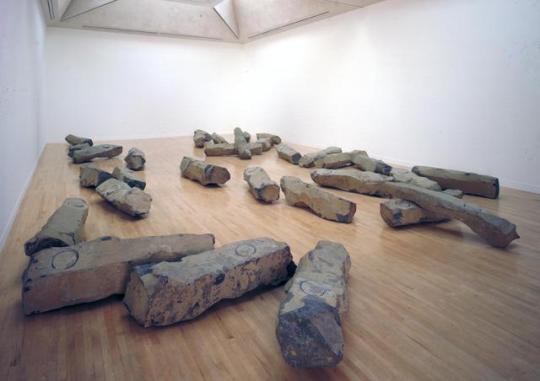
Joseph Beuys The End of the Twentieth Century 1983–5 The End of the Twentieth Century is a large installation consisting of thirty-one rough, bulky basalt rocks, which are strewn across the floor in a seemingly random manner. The stones are all a muted beige colour, mottled with patches of grey. Each rock measures between one and two and a half metres in length and has a cone-shaped hole drilled into the upper side of one of its ends. These cone-shaped cavities have been smoothed down and lined with clay and felt, and the pieces of basalt that were removed from the stones have been polished before being placed back into their holes. The rocks lie in loose, haphazard clusters that resemble piles of debris. However, they are broadly arranged in two groups, leaving a long gap down the centre so that viewers can walk among them. This installation was made by the German artist Joseph Beuys in 1985. It is the third in a series of works that all have the same title and were produced in roughly the same way. The first of these, which comprises twenty-one stones, was conceived in 1983 for the exhibition Tending Towards the Total Work of Art at Kunsthalle Düsseldorf after its curator, Harald Szeeman (1933–2005), asked Beuys to make a new work for the show. While producing this first version of the work, Beuys also prepared another, which includes forty-four stones. The Tate installation is the final large-scale version of this work that Beuys oversaw. The artist was involved in selecting and preparing its stones in 1985, but he died in January 1986, before the work was installed. Although Beuys made some initial sketches that illustrate possible ways of arranging the stones, there are no fixed rules for installing The End of the Twentieth Century. This poses a challenge for curators, who must decide how to display the installation and whether to base their decision on previous displays of other versions that the artist helped to install. After Tate purchased this work in 1991, Tate curator Sean Rainbird and Beuys’s former Munich gallerist Bernd Klüser devised a composition for displaying the piece that drew on previous arrangements and the artist’s drawings. The work was first shown according to their plans at the Tate Gallery in 1992 and, aside from very minor alterations, it has been displayed in the same way since. The title of this installation makes reference to what was at the time the impending end of the twentieth century, and the art historian Mark Rosenthal has suggested that the work expresses a pessimistic view of this by evoking ‘the haphazard aftermath of a calamity’ (Mark Rosenthal, ‘Joseph Beuys: Staging Sculpture’, in Menil Collection 2005, p.84). Furthermore, this work could be seen as a reflection on the physical effects of the passage of time: clay, felt and basalt are materials that were used frequently by Beuys, who often stated that he was interested in basalt’s status as a volcanic rock, and the art historian Victoria Walters has argued that he associated it with ‘a very long-term, geological notion of time’ (Victoria Walters, Joseph Beuys and the Celtic Wor(l)d, Zürich 2012, p.248). In 1984 Beuys claimed that he wanted this installation to allegorise a relationship between the past and the near future to which its title refers: This is the end of the twentieth century. This is the old world, on which I press the stamp of the new world. Take a look at the plugs, they look like plants coming from the stone age. I took great pains to drill them out of the basalt in a funnel shape and then set them back into the hollows using felt and clay so they cannot do each other harm, and can keep warm. It is something agile, eruptive, lively in this solidified mass – in the same way that the basalt itself was once pressed out of the earth’s interior. (Quoted in Willisch and Heimberg 2007, p.7.) Beuys’s suggestion that this installation produces a harmonious relationship between ancient, natural forces and the ‘new world’ may have been linked with his commitment to the ecological movement in this period, which led him to found the German Green Party in 1980. The End of the Twentieth Century is also directly connected with another of his major late works, 7000 Oaks: city forestation instead of city administration 1982, which was produced by Beuys for Documenta 7 in Kassel, Germany. To make this work, Beuys placed seven thousand stones on the square in front of the Museum Fridericianum, Documenta 7’s central exhibition space. Over the next five years the rocks were gradually removed and each was placed next to a newly-planted oak tree elsewhere in Kassel. In 1983 forty-four of the stones were moved from the square to Düsseldorf for the 1983 Galerie Schema installation of The End of the Twentieth Century, before being replaced. Beuys stated that he wanted 7000 Oaks: city forestation instead of city administration ‘to initiate the gradual “straightening process”, the “enlivening process” of nature as well as of the social–ecological, that is, social organism’ (quoted in Eckart Förster, ‘“Gentleness, Indirectness, Imperceptibility, and often ‘Anti-Technics’ are my choices”: on Joseph Beuys’ The End of the 20th Century’, in Menil Collection 2007, pp.62–3.) http://www.tate.org.uk/art/artworks/beuys-the-end-of-the-twentieth-century-t05855
0 notes
Text
Five important exhibitions to see in Paris: Art, history and politics
“Holocaust and Comic Books” at the Holocaust Memorial – until October 30, 2017
Horst Rosenthal, Mickey Mouse in the Gurs Camp, 1942. Mémorial de la Shoah collection.
Art Spiegelman’s Maus aside, the subject of Holocaust as represented in comic books and graphic novels has remained largely unexamined. Now a heartrendingly beautiful exhibition, “Holocaust and Comic Books” at the Holocaust Memorial (Memorial de la Shoah) in Paris, sheds new light on the often-overlooked representation of this historical tragedy in comics and graphic novels. The exhibition begins with the first eyewitness and victim testimonies of the genocide, including the bittersweet Mickey Mouse in the Gurs Camp, a handbound album by Horse Rosenthal while he was in the French concentration camps. It then goes on to map the gradual political, social and aesthetic changes in the depiction of the Holocaust with an exceptional selection of over 200 rare and original works spanning over a period of 75 years. These include the early anthropomorphisms and gingerly references to the Holocaust in superhero comics to the later use of graphic novels as a means to communicate and educate about the difficult issues of historical tragedies, identity and memories. It is a solemn, well-explained exploration of a subject and a medium quite frequently obscured or forgotten in contemporary sociopolitical and cultural discourse. Details>>
“21 Rue la Boétie” at Musée Maillol – until July 23, 2017
Georges Braque (1882-1963), Fruit on a Tablecloth, 1924. Fondation Collection E.G. Bührle, Zurich. © ADAGP, Paris, 2017, © Fondation Collection E. G. Bührle, Zurich.
Based on the book My Grandfather’s Gallery: A Family Memoir of Art and War (originally published in French as 21 Rue la Boétie) by Anne Sinclair, the Musée Maillol exhibition traces the remarkable story of Sinclair’s grandfather, Paul Rosenberg (1881-1959). One of the most influential art dealers of the first half of the 20th century, Rosenberg was a friend and principal dealer of Picasso and brought many of the modern art masters, including Matisse, Léger, Braque and Marie Laurencin, to wider public attention. The exhibition recreates the history of 21, Rue la Boétie, Rosenberg’s family house and art gallery which once served some of the most prominent modern artists and was ironically occupied in 1941 to house the Institute for the Study of Jewish and Ethno-Racial Questions. On view are over sixty rarely seen works that mark the emergence of modern art and the shift of international art market from Paris to New York, but also a detailed section documenting ‘The Great Exhibition of Modern Art’, held at the same time as the exhibition on what was considered as ‘degenerate art’. Details>>
“Ciao Italia!” at the National Museum of the History of Immigration – until September 10, 2017
L’heure du café. © Alain Fleischer.
With Ciao Italia!, the National Museum of the History of Immigration (Musée national de l’histoire de l’immigration) retraces the path of Italian immigration in France starting from the year 1860. Spanning across a century, the exhibition does not merely emphasise on the Italian integration and contribution to the industry and culture in France – automobiles, cinema, arts, sports, commerce and industry – but also deals with difficult issues of exclusion, discrimination, rejection, xenophobia and violence (such as during the massacre of Aigues-Mortes in 1893) faced by Italian migrants in France. With some 400 exhibits on display – artworks, objects, archival documents, posters and films – the exhibition is a richly documented survey of one of the greatest waves of immigration to France. The museum is situated on the edge of Bois de Vincennes and is housed in the Palais de la Porte Dorée, also home to the Paris’ tropical aquarium. Curiously enough, the building was used for the International Colonial Exposition of 1931, and its imposing facade, created by Alfred Janniot, is a sculpted eulogy to French colonial rule in Africa, Asia, the Antilles and Oceania. Details>>
“Rock the Kasbah!” at Institut des Cultures d’Islam – until July 30, 2017
Angelica Mesiti, Nakh Removed, Video, 2015. © Angelica Mesiti
courtesy the artist and Galerie Allen, Paris
and Anna Schwartz Gallery Melbourne.
British punk rock band The Clash’s wrote their cult song Rock the Casbah after Ayatollah Khomeini banned rock music in Iran. The song today is the inspiration behind Institut des Cultures d’Islam’s exhibition Rock the Kasbah!, which explores the effect music and sounds have on our bodies and minds. The exhibition brings together some highly engaging musical, art, photographic and film works by artists from Sub-Saharan Africa, South-East Asia, Europe, Middle-East and the United States in an attempt to examine music’s potential as an instrument of protest, its spiritual dimension and its capacity to make our bodies move. It also brings into perspective the Muslim practice of public diffusion of prayer sounds and the manner in which it influences individual and collective behaviour. Some highlights from the exhibition include Angelica Mesiti’s video of four women absorbed in a hypnotising ‘dance of the hair’ and Siaka Soppo Traoré’s photographs of break dancers frozen in mid-air. In a profound but disturbing video – This Lemon Tastes of Apple – shot in the streets of Sulaymaniyah in Iraqi Kurdistan, an unflinching Hiwa K plays harmonica in the face of a brutal attempt to repress a public demonstration. The exhibition is accompanied by several cultural events, concerts – Berber rock, Senegalese hip-hop, Palestinian rap – as well as conferences, shows, musical workshops and film screenings (the programme is available here). While you are there, do try the excellent food served in their cafeteria on Rue Léon and buy the honey from the hives on ICI Goutte d’or’s roof available in their boutiques. Details>>
Michel Journiac at Maison Européenne de la Photographie – until June 18, 2017
Michel Journiac, L’inceste, N°1 : fils-fille-amante / filsgarçon-amant / fils-voyeur, 1975. © Michel Journiac / ADAGP. Collection Maison Européenne de la Photographie, Paris.
Michel Journiac was one of the key founders of the art corporel (body art) movement in France in the 1970s. Using body as the medium, Journiac’s work questioned prevailing notions of sexuality, identity, morality and the sacred. His works, convening gender, body, blood and religion, are by no means easy to look at and this is not an exhibition for those looking for beautiful, comforting art. But that exactly was the point of Journiac’s work produced in a post-1968 France, a period that saw the emergence of various countercultures and subversive art against cultural, religious, political and social ‘systems’. His series 24h de la vie d’une femme 24 hours in the life of an ordinary woman, where he poses as a working married woman is a biting satire on the gender stereotypes promoted by popular French women’s magazines. The best known of his performances, Messe pour un corps (Mass for a body, 1969) held at the Galerie Templon after the 1968 protests, involved Journiac, an ex-seminarian, as the priest reading from the Bible and handing out blood sausage made with his own blood. His Hommage a Freud (Homage to Freud, 1972) and Incest (1974) is a social parody him cross-dressed as himself, his father and his mother. These issues remain as important today as they were when Journiac raised them. This is an exhibition that should be seen but go only if the sight of blood does not make you nauseous. On a separate note, some of the works by Michel Journiac and his contemporaries can be seen at the Maison Rouge’s ‘The French Spirit: Countercultures 1969-1989‘ – an exhibition recommended for those interested in knowing more about the social and cultural developments in the aftermath of the 1968 revolts. Details>>
The post Five important exhibitions to see in Paris: Art, history and politics appeared first on URBAN MISHMASH | Paris.
from URBAN MISHMASH | Paris https://www.urbanmishmash.com/paris/art-culture/exhibitions/must-see-exhibitions-art-history/
0 notes